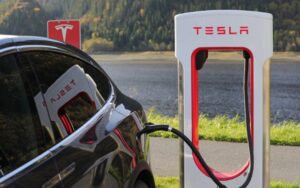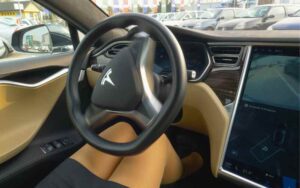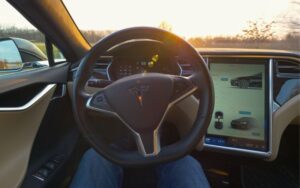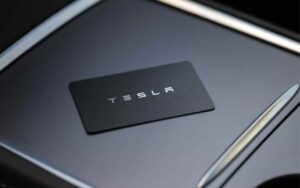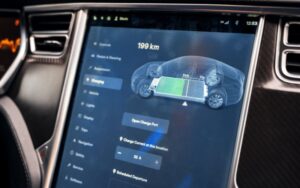Tesla Won’t Turn On And Off! (A Complete Guide)
The Tesla brand is one of the go-to brands for electric vehicles. The company manufactures incredible electric vehicles and continues to top the EV market.
Sadly, just like other conventional vehicles, electric ones can also suffer from unnecessary software malfunction.
However, what do you do when your Tesla doesn’t turn on or off? This situation can be frustrating if you don’t know what to do.
So, if your Tesla won’t turn on or off, here’s a complete guide.
Your Tesla won’t turn on or off if the software malfunctions. The processing unit may develop a glitch. This glitch, in turn, causes the touchscreen to sleep. Resultantly, you won’t be able to drive your Tesla. Also, your Tesla won’t start or turn off with a flat battery or a faulty key fob. Fortunately, you can easily resolve these issues.
In this article, I’ll discuss why your Tesla cannot turn on and off and what you should do in such situations. Ultimately, you’ll know how to hard reset your electric vehicle.
Why is My Tesla Unable to Turn On?
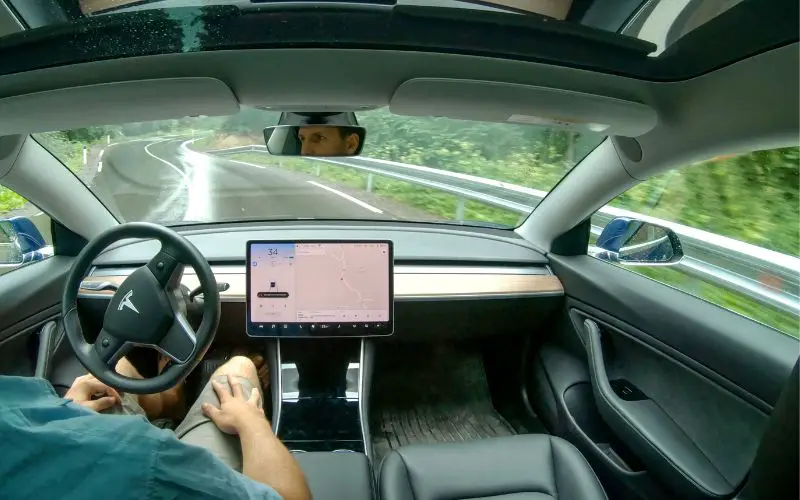
Your Tesla won’t turn on or off if the system malfunctions or the key fob and battery are faulty or unpowered.
First, This vehicle’s technology employs an electric motor instead of an internal heat engine. It uses a battery pack that gives energy to the electric motor.
Also, most Tesla parts rely on computer engineering and software.
Therefore, if there’s a problem with the battery that supplies energy to the motor, you won’t be able to start or switch off your Tesla.
Likewise, if there’s a problem with the system software, you won’t be able to turn your Tesla on or off.
Below, I’ll explain in detail why your Tesla cannot turn on.
#1. Flat Battery
As I’ve earlier established, your Tesla runs on an electric motor that receives energy from a battery pack.
Consequently, a flat battery won’t be able to supply power to the vehicle’s electric motor.
Tesla’s battery runs down for many reasons, not only due to driving the vehicle, a phenomenon known as vampire drain.
This automobile doesn’t wholly sleep to allow the computer systems to perform certain vital functions.
As a result, leaving the battery uncharged when it’s close to the end of its range can cause it to discharge overnight.
And when you’ve got an unpowered battery, your car won’t be able to start when next you want to use it.
#2. Sleeping Screen
A sleeping touchscreen is another reason your Tesla won’t turn on. This part is like a physical button in a regular car that you can use to control some functions.
Usually, when you open your car door, the infotainment system powers on, so you can control and drive the car.
However, during a fast charge, the central processing units don’t cool fast, which causes the system to lag. As a result, the touchscreen develops some bugs and may appear blank.
When you’ve got a blank screen on your Tesla, you won’t be able to access some functions and drive the car safely.
#3. Faulty Key Fob
The Tesla key fob is another mechanism it employs to access your car. This device performs multiple functions, but the primary function is to unlock and lock your car door.
If this key fails, your vehicle will fail to recognize you as you approach it.
Usually, a low or dead battery causes the fob to fail. However, shock can also cause it to lose its pairing with your vehicle.
What Do You Do When Your Tesla Won’t Turn On
You don’t have to panic if your Tesla won’t turn on. There are simple steps you can take to remedy the situation.
Below I’ll explain what you can do when your Tesla doesn’t turn on.
#1. Charge a Flat Battery
You should recharge your battery if your car doesn’t start due to a dead battery. Tesla provides plenty of options for recharging your battery when necessary.
In addition, you should regularly monitor your battery’s range to know when next you should plug it in to charge.
Allowing your battery to drain completely can damage the battery and other components, which may need replacement.
Furthermore, you can disable some functions in your Tesla to reduce the vampire battery drain.
Here’s what you can do to reduce the Tesla Vampire battery drain.
- Power off the Sentry Mode
- Disable the Smart Preconditioning
- Disable the “always connected” option on the touchscreen display
- Ensure the battery is charged at least 50% after using your Tesla daily
- Enable power-saving mode
#2. Restart or Reboot Your Tesla Touchscreen
If your Tesla Touchscreen won’t display or goes blank while driving, you can reboot the system to see if it fixes the issue.
Here’s how to reboot your Tesla touchscreen:
- Shift your vehicle into the park
- Press and hold the scroll buttons on either side of the steering wheel for 10 seconds
- This process causes the infotainment system to restart
- After some seconds, the Tesla logo should display on the screen, and the reboot should be over in 3 minutes
#3. Reset Your Tesla
If rebooting your Tesla touchscreen doesn’t solve the issue, you should try resetting the vehicle.
Below is how to fully reset your Tesla:
- Park your car in a safe place and close all doors while you sit in the car
- Release the brake pedal if you’re still pressing on it
- Head to the main screen, click the service menu, and select Power Off
- Wait for a few minutes while your car restarts. This process will shut the interior light and the screen
- Don’t touch anything while you wait for at least 3– 5 minutes
- Finally, press the brake pedal to reawaken your vehicle
#4. Replace Your Key Fob Batteries
If your Tesla doesn’t recognize your key fob, it may be time to replace the battery.
Usually, Tesla key fob batteries last up to a year under regular use.
It would help if you replace your key fob battery when you notice these signs:
- Your Tesla doesn’t recognize your key fob early enough: this is due to reduced signal strength
- It takes multiple clicks to unlock or lock the doors and to perform other functions
- It’s selective in responding
If you can’t use your key fob to access your car, you can use a key card as an alternative. You can use the card to unlock, drive and lock your Tesla.
#5. Connect Your Phone to Your Vehicle
You can also use your phone as a key to unlock, lock and start your Tesla. If your key fob or card isn’t available, a phone key will solve your problem.
All you need to do is to set up your phone key and use it to unlock and start your vehicle.
Why Won’t My Tesla Turn Off
Your Tesla won’t turn off for several reasons, which include a faulty seat sensor, an unavailable touchscreen, and a faulty key fob.
#1. Faulty Seat Sensor
Tesla automobiles shut off automatically when you exit the vehicle. And this is due to sensors on the driver seat that can detect when no one is in the seat.
Therefore, if your car doesn’t shut down after exiting the vehicle, it could be due to a faulty occupancy sensor.
#2. Unavailable Touchscreen
As I’ve earlier established, your Tesla doesn’t shut down completely to allow the system to monitor essential functions.
However, using the touchscreen, you can completely power off your system. This step will prevent vampire drain.
But if this infotainment system is blank, you won’t be able to shut down your Tesla completely.
#3. Faulty Key Fob
If you’re trying to use your key fob to power off your Tesla and it isn’t responding, then you’ve got a case of a faulty key fob.
What To Do When My Tesla Won’t Turn Off
If your Tesla doesn’t turn off, you can check for faulty sensors, restart the touchscreen and replace your key fob battery appropriately.
Here is a table showing what you should do when your Tesla doesn’t turn off:
| Solution | Steps |
|---|---|
| Check for faulty sensors | If your Tesla doesn’t turn off automatically, take it to an authorized service center to check the sensors. |
| Restart your touchscreen | If you can’t power off your car with the touchscreen, restart the system to fix internal bugs. Also fully reboot your vehicle. |
| Replace Fob battery | Replace your fob battery if it doesn’t lock your car |
| Use a key card | If the other steps don’t work, use a key card to turn off Tesla. |
| Use a phone key | Alternatively, set up your phone key to lock your vehicle |
| Use the Tesla app | Open the mobile app on your device, access your account, and lock your Tesla manually. |
How to Do Hard Reset on Tesla?
To perform a hard reset on your Tesla, you’d have to disconnect the 12V battery.
You should only perform this reboot if you can’t access a service center.
However, it would help if you were careful not to damage parts and void your warranty.
These steps may differ slightly across all models. So, ensure you consult your user manual.
Here’s how to perform a hard reset on your Tesla:
- Switch off Climate Control System
- Open the driver’s window completely
- Open the trunk of your car
- Remove the top board to reach the battery
- Find the 12V battery. First, disconnect the negative cable and insulate the terminal from the post
- Then disconnect the first responder coil
- Wait for 2 minutes
- Finally, follow the steps in reverse order to complete the reset

Hey, I’m Michael Davis, a 35-year-old with a degree and a love for cars and tech. Since I was a kid, cars have been my thing—so much that I even thought they ran on magic beans! Fast forward, and I’ve built Vehicle Army, your one-stop-shop for easy-to-understand car facts.

